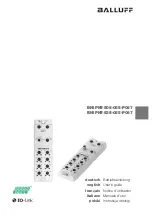
48
IMPORTANT PRINCIPLES
For ingredient addition, the principles we are adhering to are
as follows:
A. The water you use should be drinking water quality. Follow
the principle “If you can drink it you can brew with it”.
Chlorinated water doesn’t need to have the chlorine removed
but if you have a carbon filter commonly used for that purpose,
then that water is also fine.
B. The yeast needs to be rehydrated in 25°C+/-5°C water
(77+/-9°F) This temperature is optimal for dried yeast
rehydration and water is better than wort/must, as water
puts the yeast cells under less osmotic stress during the
hydration phase. Tap water (with its naturally dissolved
mineral content) or deionised or sterile water all work well.
C. WilliamsWarn liquid and dry malt extracts do not need to be
boiled. They have already been boiled in a brewery. The hot
water employed is just used to help dissolve the liquid and
dry malt extracts more easily.
D. After adding all the ingredients and water, the goal is to achieve
a final wort/must volume of 23 Litres (5 UK Gallons/6
US Gallons) and a temperature of approximately 25+/-8°C
(77+/-14°F) when you pitch the yeast. This is so the wort/
must temperature is within 8°C (14°F) of the yeast that is
rehydrating in the water and therefore any “cold shock” to the
yeast is avoided when the wort/must added to it.
E. The temperature of the water used in the Standard Method can be
adjusted by you in order to achieve this final wort/must target
of 25+/-8°C (77+/-14°F) when the vessel valve is opened to the
yeast in the sediment bottle. You may need to make adjust-
ments depending on the season you are brewing in and the
temperature of your cold water. You can add more hot water
when you fill up the vessel, instead of cold water, if your water
source is too cold. Alternatively you can reduce the temperature
of the hot water the LME is dissolved into if your cold water is
too warm. Using our Standard Method instructions, the final
wort/must temperature will vary as shown in the table below,
depending on your local cold water temperature.
If your local cold water temperature is lower than 12°C
(54°F) or above 30°C (86°F) you will need to add some
adjustments as follows:
1. If your cold water temperature is between 7-12°C (45-
54°F), add 1 Litre (2 US pints) of boiling water before
reaching the 23 Litre mark, in order to bring the final
wort/must temp to about 20°C (68°F). If your local water
is below 7°C (45°F), add 2 Litres of boiling water before
reaching the 23 Litre mark, to bring your wort/must
temperature to about 20°C (68°F).
2. If your local water temperature is between 30-35°C
(86-95°F), then dissolve the liquid extract in the 2 Litre
jug and empty can in Stage 2 in 50°C (122°F) water
rather than boiling water. If your local water temperature
is higher than 35°C (95°F), you will need to cool the
wort/must to 25°C before adding the yeast to it, by
setting the temperature controller to 25°C (77°F) and
waiting until temperature is achieved.
F. Avoiding Cold Shock: In any case, no matter what the
difference is between your wort/must and yeast, you can
reduce any cold shock issues by just adding the wort/must
in parts when you open the vessel valve to the sediment
bottle with the rehydrating yeast in it. If you add the wort/
must slowly and once the yeast liquid volume is doubled
(e.g. 500ml) then wait a few minutes. The yeast will get
used to the temperature of the wort/must. Then add the
rest of the wort/must.
Adding wort/must that is 8°C (14°F) colder than the
yeast is more of an issue compared to the opposite.
But the temperature of the yeast and wort/must should
not exceed 35°C (95°F) in general, to avoid overheating
the yeast.
If the temperature of the yeast and wort/must are within
8°C (14°F), you don’t in essence need to add the wort/
must in parts as we have written in Stage 2 and you can
just open the valve and add it all. However it’s a good safety
precaution to do a part fill for 1 minute in any case, to
get the yeast used to any quick temperature difference,
so we‘ve stated it as a standard method in the instructions.
This technique also reduces osmotic stress on the yeast by
allowing the yeast to accustom itself to wort at half strength
for a short period.
G. After the yeast has been added to the wort/must, the
fermentation temperature is then set. In this way, the
yeast has time to fully rehydrate and adjust to its new wort/
must environment at the temperature described above and
the brewery then moves the wort/must, over some time, to
whatever fermentation temperature is set.
APPENDIX TWO:
ADDING INGREDIENTS
LOCAL COLD WATER
TEMPERATURE °C (°F)
FINAL WORT/MUST TEMPERATURE BEFORE PITCHING
THE YEAST (USING STANDARD METHOD) °C (°F)
12°C (54°F)
17°C (63°F)
15°C (59°F)
20°C (68°F)
18°C (64°F)
23°C (73°F)
20°C (68°F)
24°C (75°F)
23°C (73°F)
27°C (81°F)
25°C (77°F)
29°C (84°F)
28°C (82°F)
31°C (88°F)
30°C (86°F)
33°C (91°F)















































